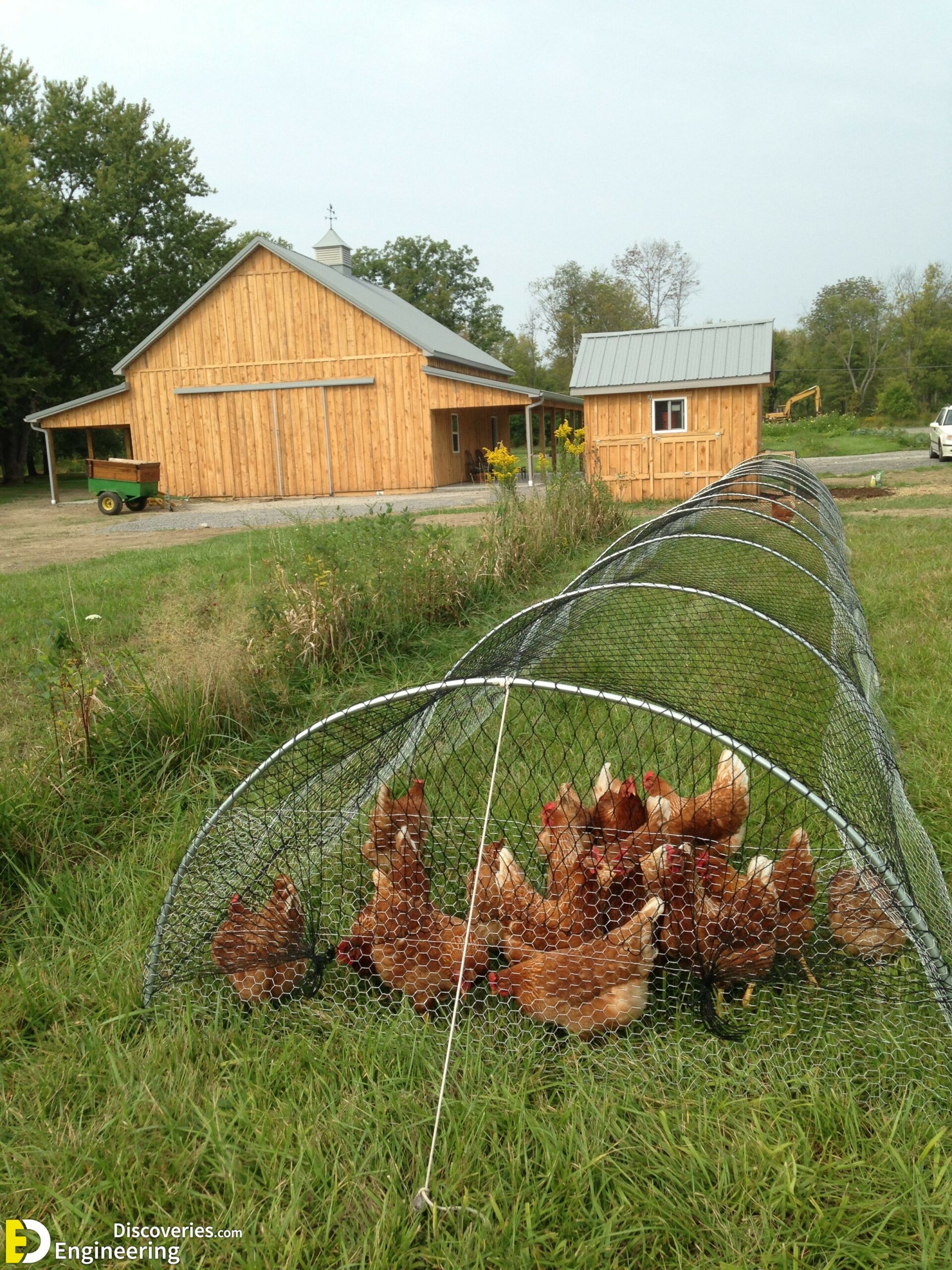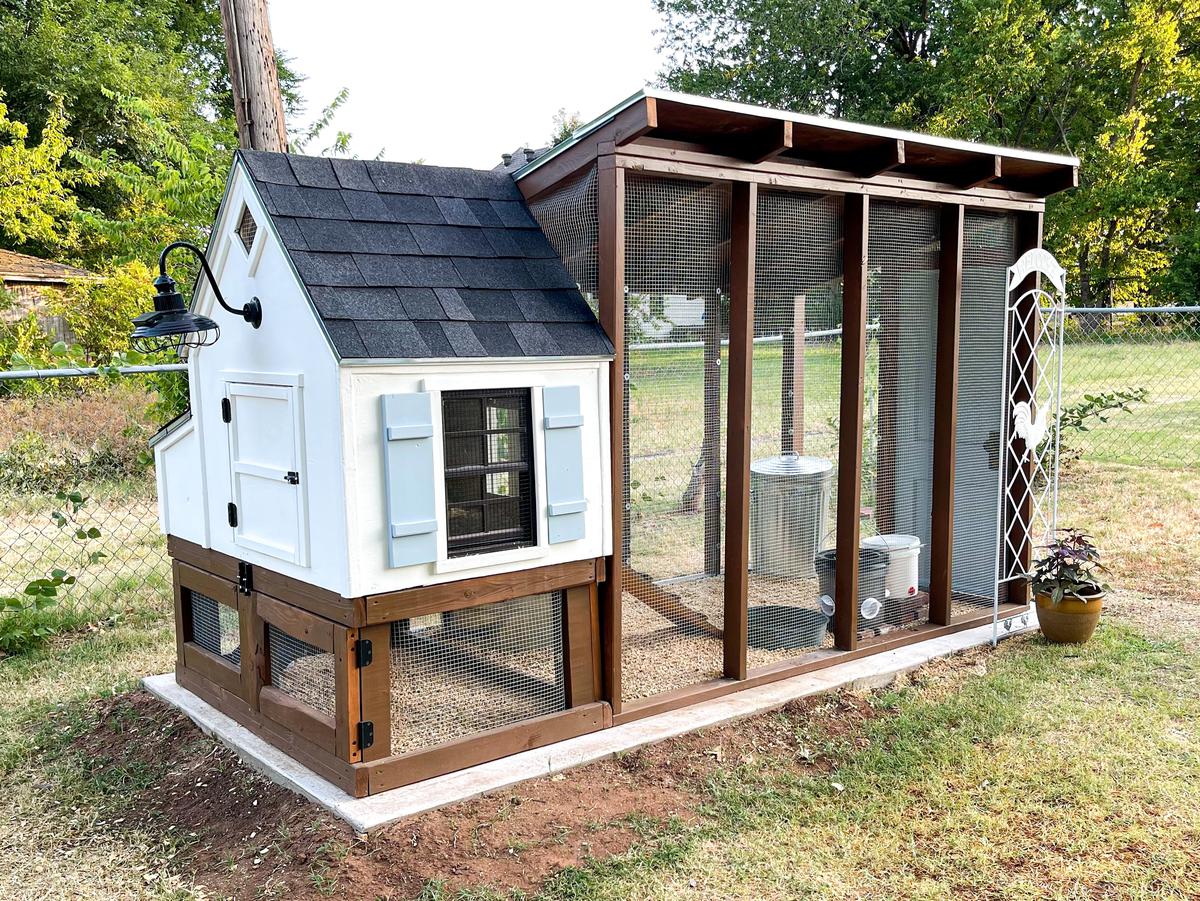Building homemade chicken pens has become increasingly popular among backyard farmers and poultry enthusiasts. As more people embrace sustainable living, raising chickens at home provides numerous benefits, including fresh eggs and organic waste management. A well-constructed chicken pen ensures the safety and comfort of your flock while promoting healthy living conditions. In this guide, we will explore everything you need to know about designing, constructing, and maintaining homemade chicken pens.
Creating a chicken pen at home is not just about building a shelter; it's about crafting an environment that supports the health and well-being of your chickens. Whether you're a beginner or an experienced poultry keeper, understanding the basics of chicken pen construction can make all the difference in ensuring your birds thrive.
This article will delve into the essential elements of homemade chicken pens, including design considerations, materials, maintenance tips, and more. By the end of this guide, you'll have the knowledge and confidence to build a safe and comfortable chicken pen tailored to your backyard setup.
- Jr Smith Scared To Take Layup In Nba Finals
- Td Pavilion At The Mann
- Hermanos Caro Bajo Prenter
- When Was Apple Founded
- Martin Starr American Actor
Table of Contents
- Introduction to Homemade Chicken Pens
- Design Considerations for Chicken Pens
- Choosing the Right Materials
- Step-by-Step Construction Guide
- Ensuring Safety and Security
- Maintenance Tips for Long-Lasting Pens
- Creative Variations of Chicken Pens
- Estimating Costs for Your Chicken Pen
- Benefits of Homemade Chicken Pens
- Frequently Asked Questions
Introduction to Homemade Chicken Pens
Homemade chicken pens are essential for anyone looking to raise chickens sustainably. A well-built pen provides shelter, protection, and a comfortable space for your flock to thrive. With the growing interest in backyard farming, many people are opting to construct their own pens rather than purchasing pre-made ones. This approach allows for customization and cost savings.
When designing a chicken pen, it's crucial to consider factors such as space, ventilation, and predator-proofing. These elements contribute to the overall health and happiness of your chickens. Additionally, building your own pen allows you to incorporate unique features that suit your specific needs and preferences.
Design Considerations for Chicken Pens
Space Requirements
One of the most important aspects of designing a chicken pen is determining the appropriate space requirements. On average, each chicken needs at least 2-3 square feet of space inside the coop and 8-10 square feet in the run. This ensures they have enough room to move around comfortably.
- Washington State Department Of Health
- Night Of The Demons
- La Casa De Los Famoso
- Taylor Swift Boyfriend 2024
- Performance Food Group Company
Ventilation
Proper ventilation is vital for maintaining a healthy environment within the chicken pen. Good airflow helps prevent moisture buildup and reduces the risk of respiratory issues. Consider incorporating vents or windows in your design to enhance air circulation.
Predator-Proofing
Protecting your chickens from predators is a top priority when building a pen. Use sturdy materials such as welded wire mesh and ensure all openings are securely sealed. Additionally, burying the fencing underground can deter burrowing animals like foxes and raccoons.
Choosing the Right Materials
Selecting the appropriate materials for your homemade chicken pen is essential for durability and longevity. Common materials include wood, metal, and plastic. Each material has its advantages and disadvantages, so it's important to choose based on your specific needs and budget.
- Wood: Durable and easy to work with, wood is a popular choice for chicken pen construction. However, it requires regular maintenance to prevent rot and decay.
- Metal: Offers excellent durability and resistance to weather conditions. Metal pens may require additional insulation to regulate temperature.
- Plastic: Lightweight and resistant to moisture, plastic is a cost-effective option. However, it may not be as durable as wood or metal.
Step-by-Step Construction Guide
Building a homemade chicken pen involves several steps, from planning to assembly. Follow this step-by-step guide to ensure a successful construction process:
Planning and Preparation
Before starting construction, create a detailed plan that includes measurements, material lists, and a timeline. This will help you stay organized and avoid potential pitfalls during the building process.
Assembling the Frame
Begin by constructing the frame of the pen using sturdy materials such as pressure-treated wood or metal pipes. Ensure the frame is level and securely anchored to the ground.
Installing Flooring and Walls
Choose a suitable flooring material, such as concrete or gravel, to provide a clean and durable surface. Install walls using welded wire mesh or chicken wire to create a secure enclosure.
Ensuring Safety and Security
Safety should be a primary concern when building a chicken pen. Implementing effective security measures will protect your flock from predators and environmental hazards.
- Install locking mechanisms on all doors and openings.
- Use heavy-duty materials for fencing and roofing.
- Regularly inspect the pen for signs of wear and tear, repairing any damage promptly.
Maintenance Tips for Long-Lasting Pens
Proper maintenance is key to ensuring your homemade chicken pen remains functional and safe for years to come. Follow these tips to keep your pen in top condition:
Cleaning
Regular cleaning is essential for maintaining a healthy environment. Remove droppings daily and replace bedding materials as needed to prevent odors and disease.
Inspection
Conduct routine inspections of the pen to identify and address any issues. Check for signs of damage, such as holes or loose boards, and repair them promptly to maintain security.
Upkeep
Perform regular upkeep tasks, such as sanding and painting wooden structures, to prolong the lifespan of your pen. This will also enhance its appearance and functionality.
Creative Variations of Chicken Pens
While traditional chicken pens are effective, there are many creative variations you can explore to suit your unique needs and preferences. Some popular options include:
Movable Chicken Tractors
Chicken tractors are portable pens that allow you to move your flock to different areas of your yard. This promotes healthy grazing and prevents overuse of a single area.
Upscale Chicken Coops
If you're looking to add a touch of luxury to your backyard, consider building an upscale chicken coop complete with nesting boxes, perches, and decorative features.
DIY Repurposed Pens
Repurpose old materials, such as pallets or shipping containers, to create eco-friendly and budget-friendly chicken pens. This approach promotes sustainability while reducing costs.
Estimating Costs for Your Chicken Pen
The cost of building a homemade chicken pen can vary significantly depending on factors such as size, materials, and design complexity. On average, a basic pen may cost between $200 and $500, while more elaborate designs can exceed $1,000.
To estimate costs, create a detailed budget that includes materials, tools, and labor if applicable. Shopping around for materials and taking advantage of sales or discounts can help reduce expenses.
Benefits of Homemade Chicken Pens
Building your own chicken pen offers numerous benefits, both for your chickens and your wallet. Some key advantages include:
- Customization: Design a pen that meets the specific needs of your flock and fits seamlessly into your backyard.
- Cost Savings: Constructing a pen yourself can save money compared to purchasing pre-made options.
- Personal Satisfaction: The sense of accomplishment from building something with your own hands is incredibly rewarding.
Frequently Asked Questions
Here are some common questions about homemade chicken pens:
How Long Does It Take to Build a Chicken Pen?
The time required to build a chicken pen depends on its size and complexity. A simple pen can be completed in a weekend, while more intricate designs may take several weeks.
What Are the Best Materials for a Chicken Pen?
Wood, metal, and plastic are popular choices for chicken pen construction. Each material has its own set of advantages, so choose based on your specific needs and budget.
Can I Build a Chicken Pen Without Prior Experience?
Yes, with the right resources and guidance, anyone can build a chicken pen. Start with a simple design and gradually work your way up to more complex projects as you gain experience.
Building a homemade chicken pen is a rewarding endeavor that provides numerous benefits for both you and your chickens. By following the tips and guidelines outlined in this article, you can create a safe, comfortable, and stylish shelter for your flock. Remember to prioritize safety, choose quality materials, and maintain your pen regularly to ensure its longevity.
Take action today by sharing this article with fellow poultry enthusiasts or leaving a comment below with your thoughts and questions. Happy building!


Detail Author:
- Name : Lorena Hand
- Username : macejkovic.santino
- Email : kenny.adams@wyman.com
- Birthdate : 1975-03-12
- Address : 118 Lucas Canyon North Annabel, DC 74578
- Phone : (272) 971-3760
- Company : Legros-Glover
- Job : Astronomer
- Bio : Sint voluptatum non facere dignissimos. Sit voluptatum dolorem aut voluptatum beatae error velit et. Ducimus est dolorem ut facere aliquid.
Socials
linkedin:
- url : https://linkedin.com/in/mueller1977
- username : mueller1977
- bio : Eligendi in occaecati corrupti quibusdam ab qui.
- followers : 4444
- following : 2631
facebook:
- url : https://facebook.com/mueller2016
- username : mueller2016
- bio : Optio omnis aliquam quos quis.
- followers : 4989
- following : 1473
twitter:
- url : https://twitter.com/lukas_id
- username : lukas_id
- bio : Illo sunt hic non. Non et nemo veritatis minus. Maxime fugiat cupiditate necessitatibus adipisci.
- followers : 3263
- following : 2975
instagram:
- url : https://instagram.com/lukas_mueller
- username : lukas_mueller
- bio : Maiores in ex id porro sit. Repellendus et rem veniam ut repellat.
- followers : 3920
- following : 2634
tiktok:
- url : https://tiktok.com/@lukas_dev
- username : lukas_dev
- bio : Nostrum eaque ipsum voluptatem autem sequi eveniet ratione porro.
- followers : 5538
- following : 1916